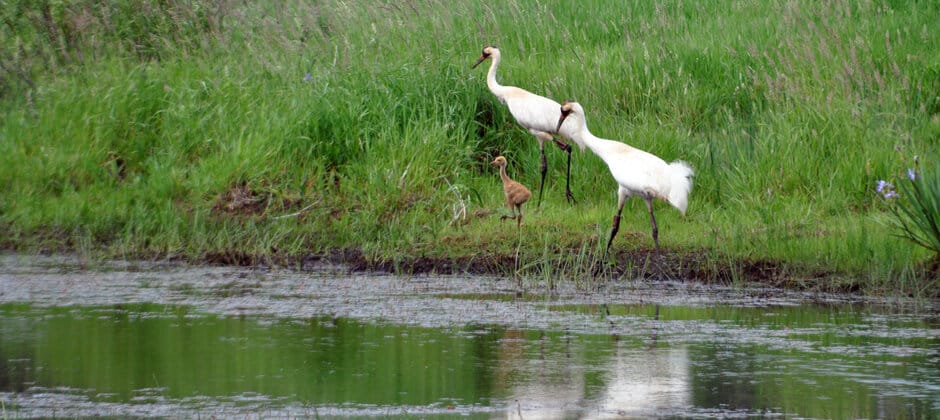Share this article
Migrating whooping cranes avoid wind turbines
Whooping cranes avoid wind turbines during migration, according to a recent study. Researchers monitored 57 whooping cranes (Grus americana) between 2010 and 2016 using radio-telemetry devices. The number of wind turbines in the Great Plains tripled along the migration corridor and quadrupled in the center of the corridor during that period. The researchers found that the cranes they tracked were 20 times more likely to use areas farther away from turbines than close to turbines during their rest stops. “In the past, federal agencies had thought of impacts related to wind energy primarily associated with collision risks,” said TWS member Aaron Pearse, the paper’s first author and a research wildlife biologist for the U.S. Geological Survey, in a press release. “I think this research changes that paradigm to a greater focus on potential impacts to important migration habitats.” However, the authors noted that growth of the whooping crane numbers during their study period shows that these changes in behavior likely don’t have “immediate population-level consequences.”
Header Image: Two whooping cranes with a young chick. Credit: USFWS Midwest Region








